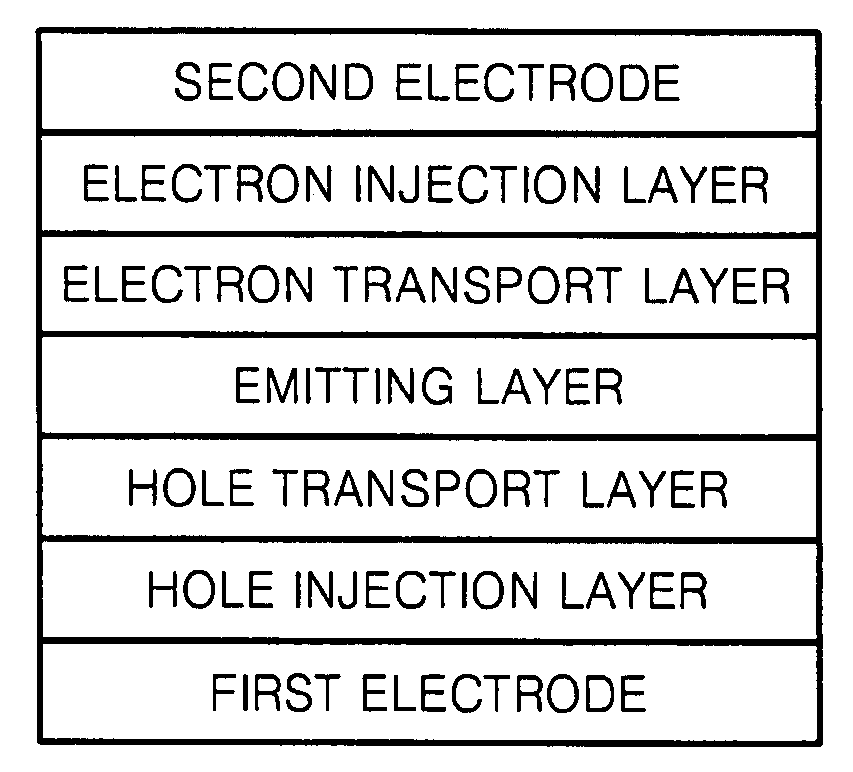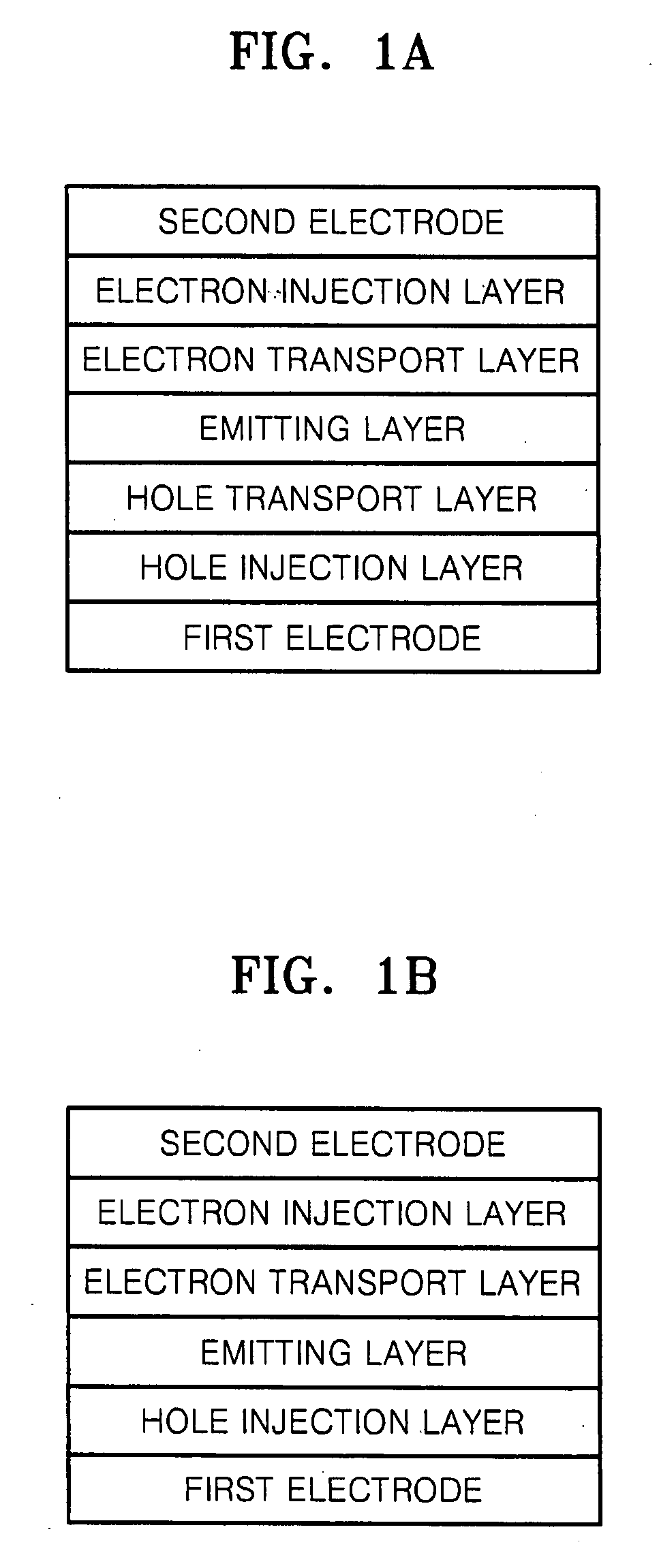Organoelectroluminescent compound and organoelectroluminescent device employing the same
- Summary
- Abstract
- Description
- Claims
- Application Information
AI Technical Summary
Benefits of technology
Problems solved by technology
Method used
Image
Examples
synthesis example 1
1) Synthesis of 8,9-dihydro-4H-cyclopenta[def]phenanthrene
[0104]4H-cyclopenta[def]phenanthrene (4.75 g, 25 mmol) was put into a Par reactor bottle, and EtOH (200 ml) was added thereto. 5% Pd / C (3.99 g) was added to the reaction solution, and the resultant solution was incubated under a hydrogen pressure of 40 psi for 24 hours. After the reaction was terminated, the reaction solution was filtered, and the filtrate was concentrated under a reduced pressure to give a white product (4.32 g, 90%).
[0105]1H NMR (300 MHz, CDCl3, δ): 7.36 (2H, d), 7.21 (2H, t), 7.12 (2H, d), 3.90 (2H, s), 3.16 (4H, s)
2) Synthesis of 2,6-dibromo-8,9-dihydro-4H-cyclopenta[def]phenanthrene
[0106]8,9-dihydro-4H-cyclopenta[def]phenanthrene (4.42 g, 23 mmol) was put into a 250 ml round bottom flask (RBF), and CCl4 (100 ml) was added thereto and dissolved therein. The reaction mixture was cooled to 0° C., and Br2 (7.72 g, 48 mmol) was dropwise added thereto. The reaction solution was incubated for 4 hours and a 10% ...
synthesis example 2
1) Synthesis of 2,6-dibromo-cyclopenta[def]phenanthren-4-one
[0113]Benzene (200 ml) was put into a 250 ml round bottom flask, and the compound 1 (3.6 g, 10.4 mmol) was added thereto. MnO2 (150 g) was added to the reaction mixture, and the resultant mixture was heated and refluxed in an oil bath for 18 hours. After the reaction was terminated, the reaction solution was filtered to remove MnO2, and sufficiently washed with CHCl3, THF, and MeOH in sequence. The filtrate was concentrated under a reduced pressure and the residue was recrystallized from acetone to give the titled compound (1.45 g, 39%).
[0114]1H NMR (300 MHz, CDCl3, δ): 8.08 (2H, s), 7.89 (2H, s), 7.74 (2H, s)
2) Synthesis of Intermediate A
[0115]2,6-dibromo-cyclopenta[def]phenanthrene-4-one (1.0 g, 2.76 mmol) was dissolved in dry ether (30 ml) and THF (10 ml), and phenylmagnesiumbromide (3.0M in ether) was gradually added thereto under a nitrogen gas atmosphere. The reaction mixture was refluxed for three hours, and water wa...
synthesis example 3
1) Synthesis of Intermediate B
[0118]2-bromobiphenyl (0.68 g, 2.95 mmol) was dissolved in anhydrous THF (10 ml), and the reaction mixture was cooled to −78° C. Then, t-BuLi (3.5 ml) was gradually dropwise added. The reaction mixture was stirred for one hour, and a solution of 2,6-dibromo-cyclopenta[def]phenanthrene-4-one (1 g, 2.95 mmol) in anhydrous THF (5 ml) was dropwise added thereto for 30 minutes. After the reaction was terminated, the reaction solution was concentrated under a reduced pressure and extracted with ethylacetate and brine to separate an organic phase. The organic phase was concentrated and the residue was purified by silica gel column chromatography to give an intermediate B (3.6 g).
2) Synthesis of Compound 4
[0119]The intermediate B was dissolved in acetic acid (30 ml), and the reaction mixture was cooled to 0° C. Then, a concentrated HCl (1 ml) was dropwise added, and the reaction mixture was incubated for two hours. After the reaction was terminated, the reactio...
PUM
| Property | Measurement | Unit |
|---|---|---|
| Nanoscale particle size | aaaaa | aaaaa |
| Nanoscale particle size | aaaaa | aaaaa |
| Nanoscale particle size | aaaaa | aaaaa |
Abstract
Description
Claims
Application Information
 Login to View More
Login to View More - R&D
- Intellectual Property
- Life Sciences
- Materials
- Tech Scout
- Unparalleled Data Quality
- Higher Quality Content
- 60% Fewer Hallucinations
Browse by: Latest US Patents, China's latest patents, Technical Efficacy Thesaurus, Application Domain, Technology Topic, Popular Technical Reports.
© 2025 PatSnap. All rights reserved.Legal|Privacy policy|Modern Slavery Act Transparency Statement|Sitemap|About US| Contact US: help@patsnap.com



